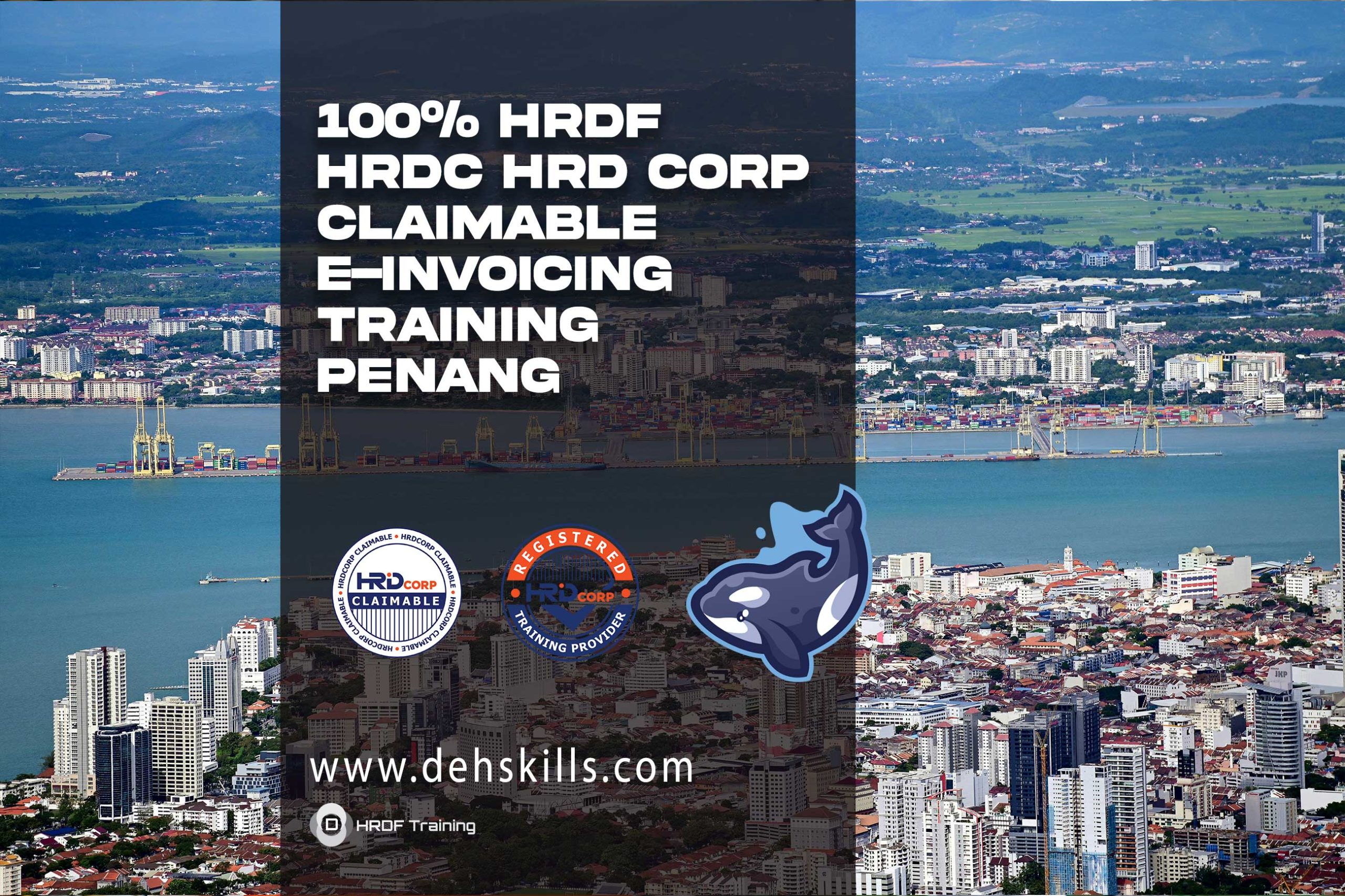HRDF HRDC HRD Corp Claimable e-Invoicing Training Penang
The Malaysian government launched the e-Invoicing initiative to enhance the efficiency and transparency of business transactions, improve tax compliance, and support the country’s digital economy goals. Here’s an overview of the reasons behind the initiative, along with its benefits and potential drawbacks.
Overview
HRDF | HRDC | HRD Corp Claimable e-Invoicing Training in Penang
Employers in Penang, Malaysia, are required to apply for e-Invoicing as a component of the wider national implementation. The Inland Revenue Board of Malaysia (IRBM) has declared that the implementation of e-Invoicing will occur gradually, commencing on August 1, 2024, for enterprises with an annual revenue over RM100 million. Subsequent phases will expand this requirement to other firms, and all taxpayers will be obligated to comply by January 2027.
Important aspects to consider are:
- The phased implementation will commence in August 2024 specifically for major firms. Starting from January 2027, the use of e-Invoicing will be obligatory for all enterprises, irrespective of their size.
- Compliance Requirements: Businesses are obligated to produce and authenticate e-Invoices using either the IRBM’s MyInvois Portal or an API that is connected to their current systems.
- The benefits of E-Invoicing in Malaysia include improved efficiency, enhanced compliance, and support for the growth of the digital economy.
How E-invoicing systems replace traditional paper-based invoice systems
E-invoicing systems supersede conventional paper-based invoice systems by employing digital transformation, process automation, and integration with financial software. This transition not only simplifies the invoicing process but also results in substantial enhancements in efficiency, precision, and adherence to regulations.
Advantages of e-Invoicing Enhanced Precision and Clarity:
- Real-Time Validation: e-Invoices undergo immediate validation to ensure the accuracy and compliance of all essential information with regulatory standards.
Traceability ensures a transparent and verifiable record of all transactions, facilitating the tracking and verification of financial information (BDO Malaysia)
Expense reduction: - Minimizes Documentation: Decreases the necessity for tangible documentation and storage, leading to reduced administrative expenses.
Automation: The implementation of automation in invoicing procedures leads to a decrease in labor expenses that are typically incurred through manual processing (BDO Malaysia).
Advantages for the environment: - Transitioning to electronic invoices reduces paper usage, hence helping to environmental sustainability (BDO Malaysia).
e-Invoicing Possible Limitations:
Costs associated with the initial implementation:
- Initial setup costs for businesses to implement and integrate e-Invoicing systems with their current infrastructure can be substantial.
- Training is necessary for employees to acclimate to new systems and processes (PwC).
Technical obstacles:
- System integration involves the complex process of integrating e-Invoicing with existing enterprise resource planning (ERP) systems, which necessitates technical competence.
- Data security is of utmost importance when it comes to safeguarding digital invoicing and sensitive financial information, and it can be a complex task (PwC).
Regulatory Obligation:
- Businesses must be informed about current regulatory changes and guarantee consistent adherence to new e-Invoicing regulations.
- Administrative Overhead: Small businesses may find the administrative cost of compliance to be onerous, particularly if they do not have the requisite resources (PwC).






